Complete Solutions to Exercises Linked Compreshension Type of chapter AROMATIC COMPOUNDS AND ALKYL AND ARYL HALIDES of Class 12 book with complete answers and questions
| Class 12 | CHEMISTRY |
| Chapter | AROMATIC COMPOUNDS AND ALKYL AND ARYL HALIDES |
| CENGAGE CHEMISTRY | Exercises Linked Compreshension Type |
| Number Of Questions | 11 |
| Academic Year | 2023-24 |
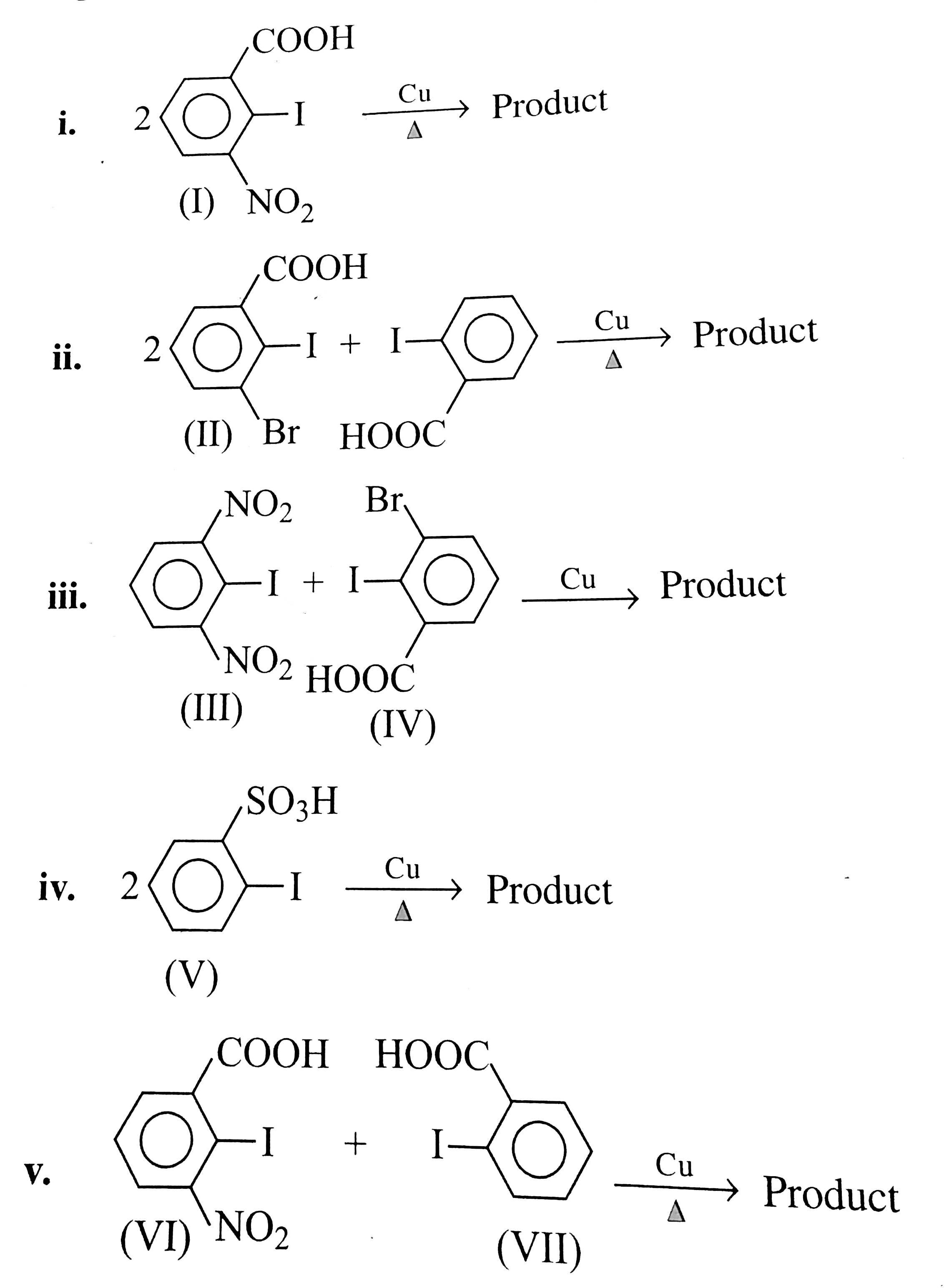
The type of stereosim arising from restricted rotation about a single bond and where the stereoisomers can be isolated is called.View SolutionA hydrocation `(A) (C_(8) H_(10)) (E)` is a stream volatile compound and on nitration gives two mononitro derivatives. `(A)` gives the following reactions.
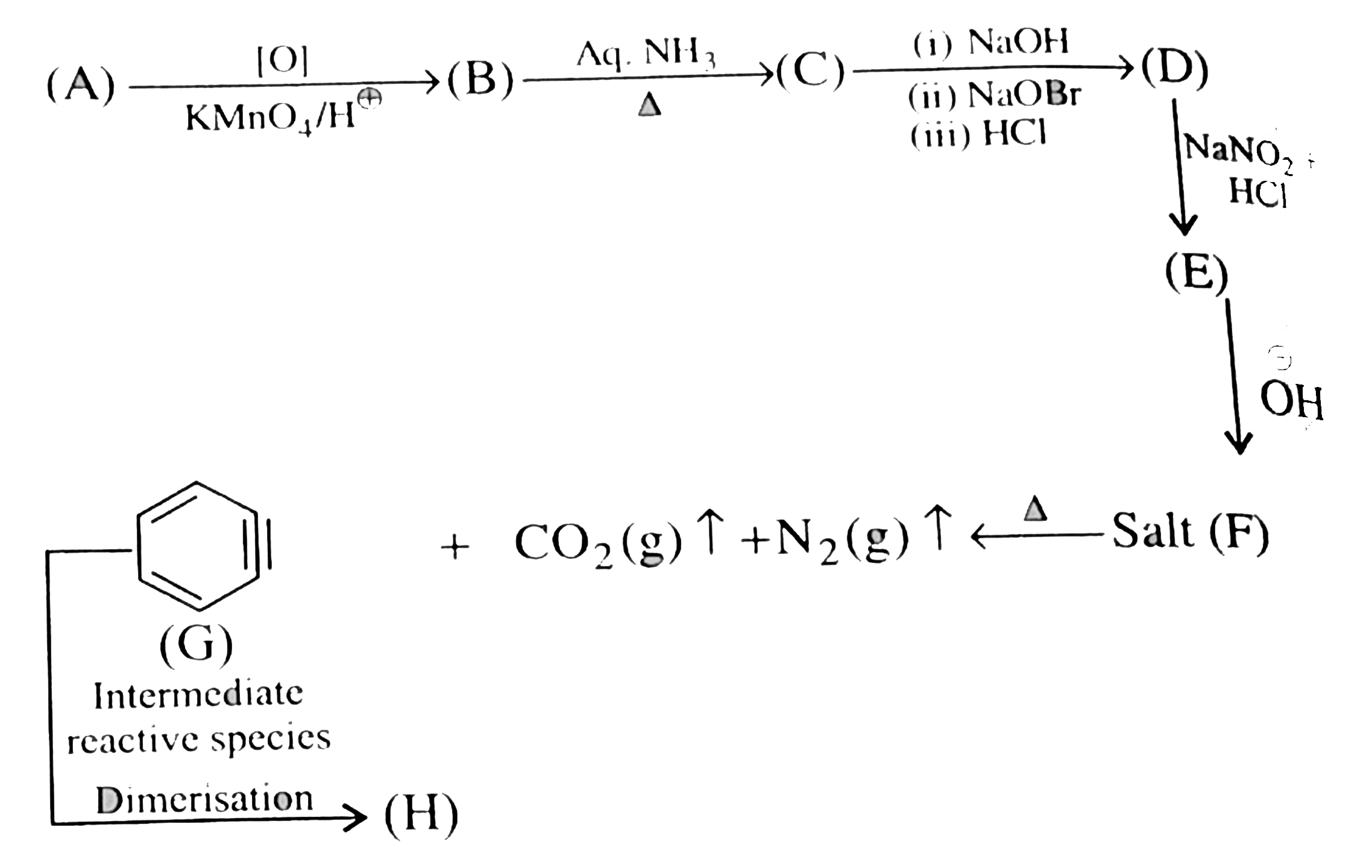
Compound `(A) is:View SolutionA hydrocation `(A) (C_(8) H_(10)) (E)` is a stream volatile compound and on nitration gives two mononitro derivatives. `(A)` gives the following reactions.
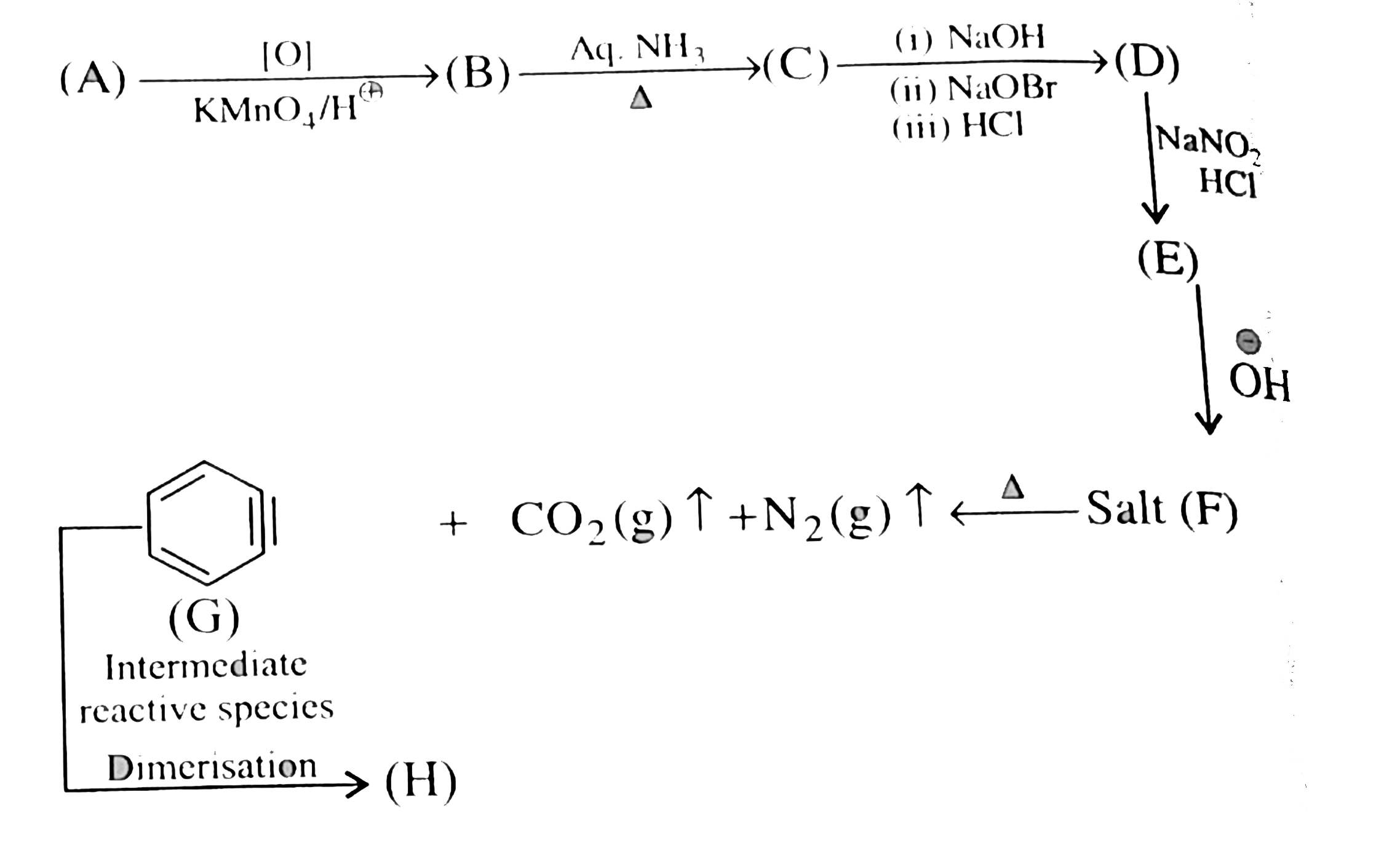
Compound `(B) is:View SolutionA hydrocation `(A) (C_(8) H_(10)) (E)` is a stream volatile compound and on nitration gives two mononitro derivatives. `(A)` gives the following reactions.
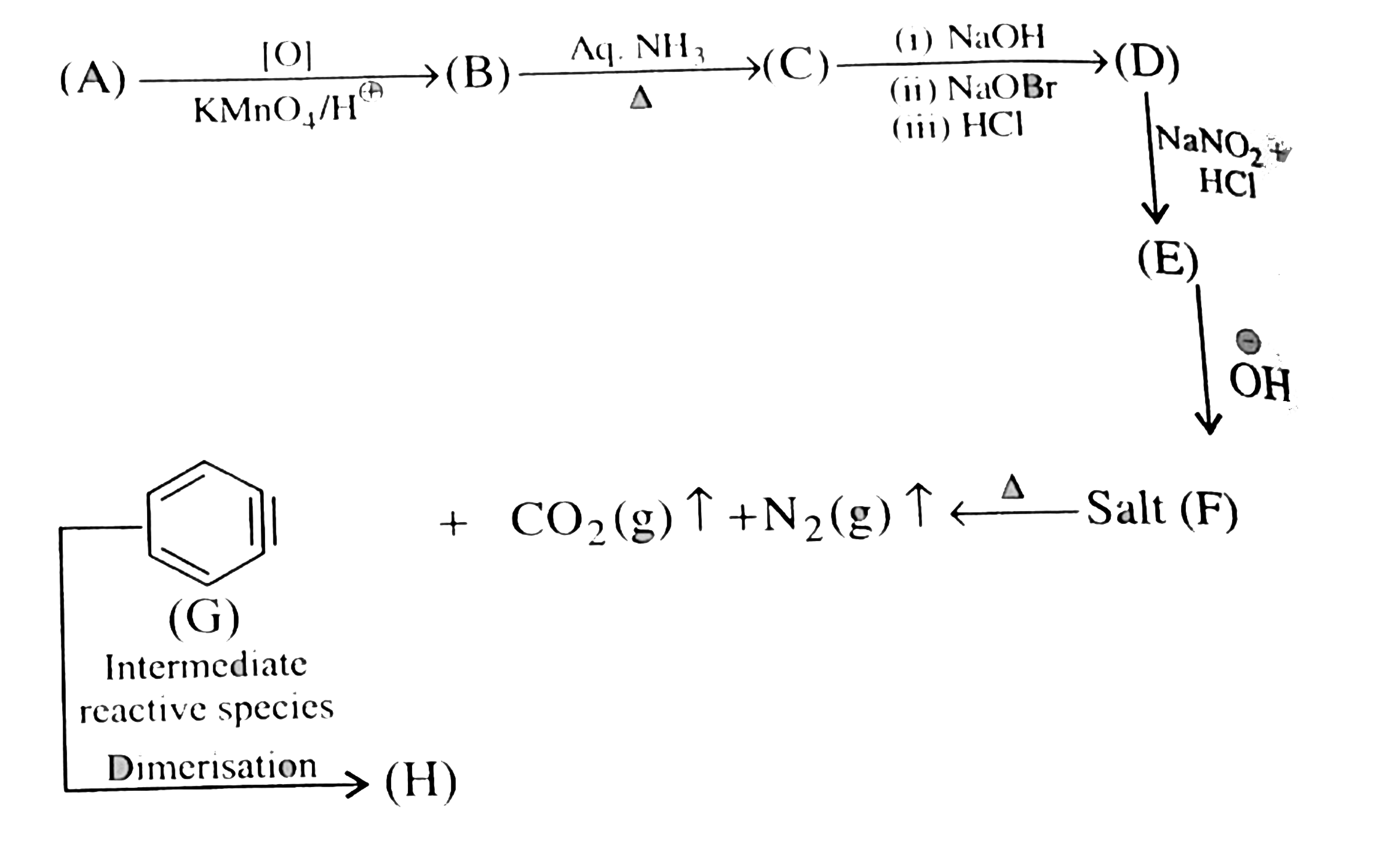
Compound `(C) is:View SolutionA hydrocation `(A) (C_(8) H_(10)) (E)` is a stream volatile compound and on nitration gives two mononitro derivatives. `(A)` gives the following reactions.
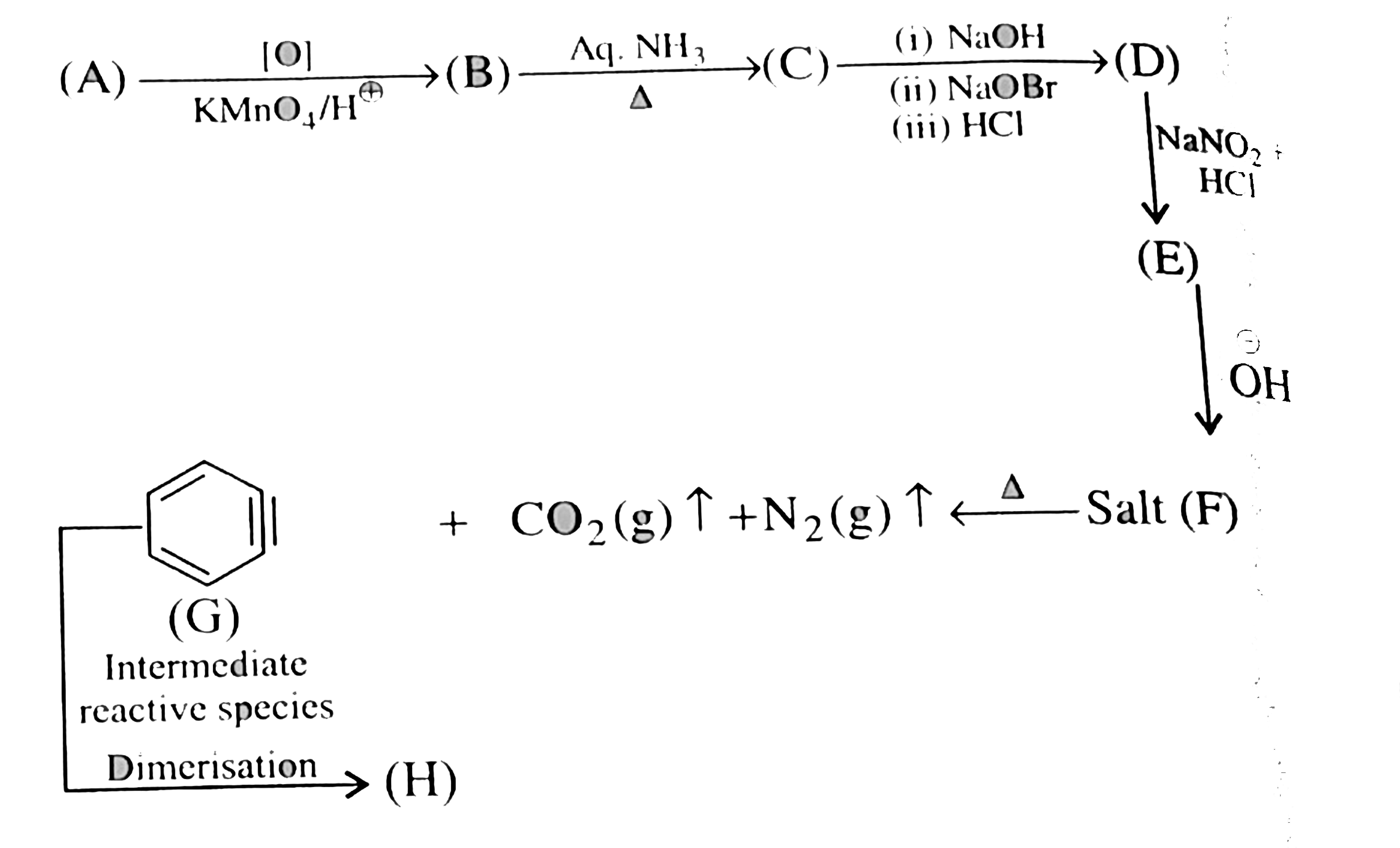
Compound `(D) is:View SolutionA hydrocation `(A) (C_(8) H_(10)) (E)` is a stream volatile compound and on nitration gives two mononitro derivatives. `(A)` gives the following reactions.
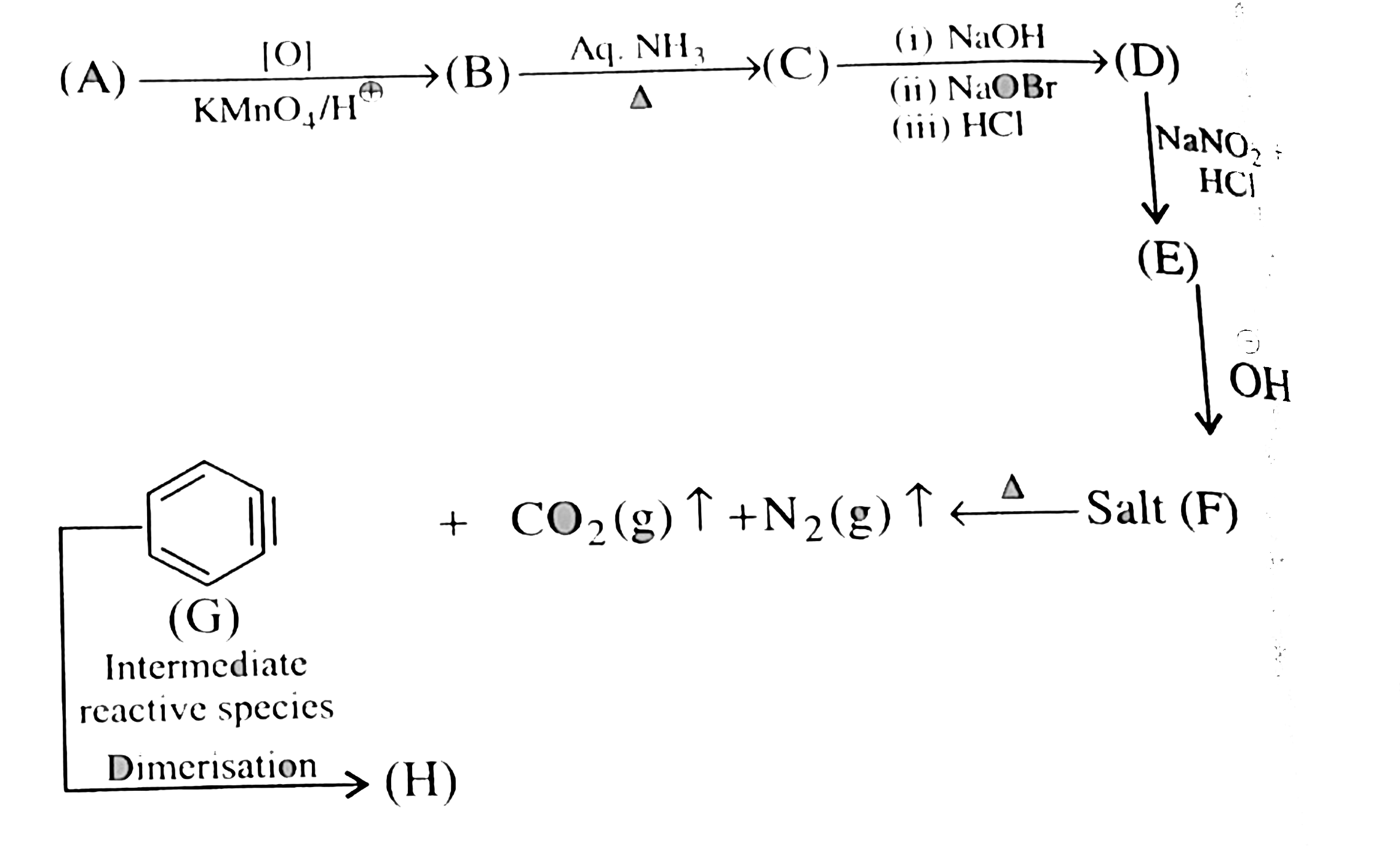
Compound `(E) is:View SolutionA hydrocation `(A) (C_(8) H_(10)) (E)` is a stream volatile compound and on nitration gives two mononitro derivatives. `(A)` gives the following reactions.

Compound `(F) is:View Solution`SN` reaction is given by these compounds, which have a nuclophilic group and a good leaving `EWG`. It should be stable after leaving with bonding pair of `overline(e)'s` and it should have high polarisability.
Nucliphilic aliphatic substituion reaction is mainly of two types `SN^(-1)` and `SN^(2). SN^(-1)` mechanism is a two step process. Reaction velocity of `SN^(-1)` depends only on the concentration of the subtrate. It proceeds via the formation of carbocation, optically active substrate gives `(o+)` and `(o-)` froms of the product.
In most of the cases, the product usually consists of `5-20%` inverted and `(95-80%)` racemised species. The more stable is the carbocation, the greater is the propotion of racemission. In solvolysis reaction, the more nucleophillic is the solvent, the greater is the proportion of inversion.
Which of the following gives `SN^(1)` reaction?
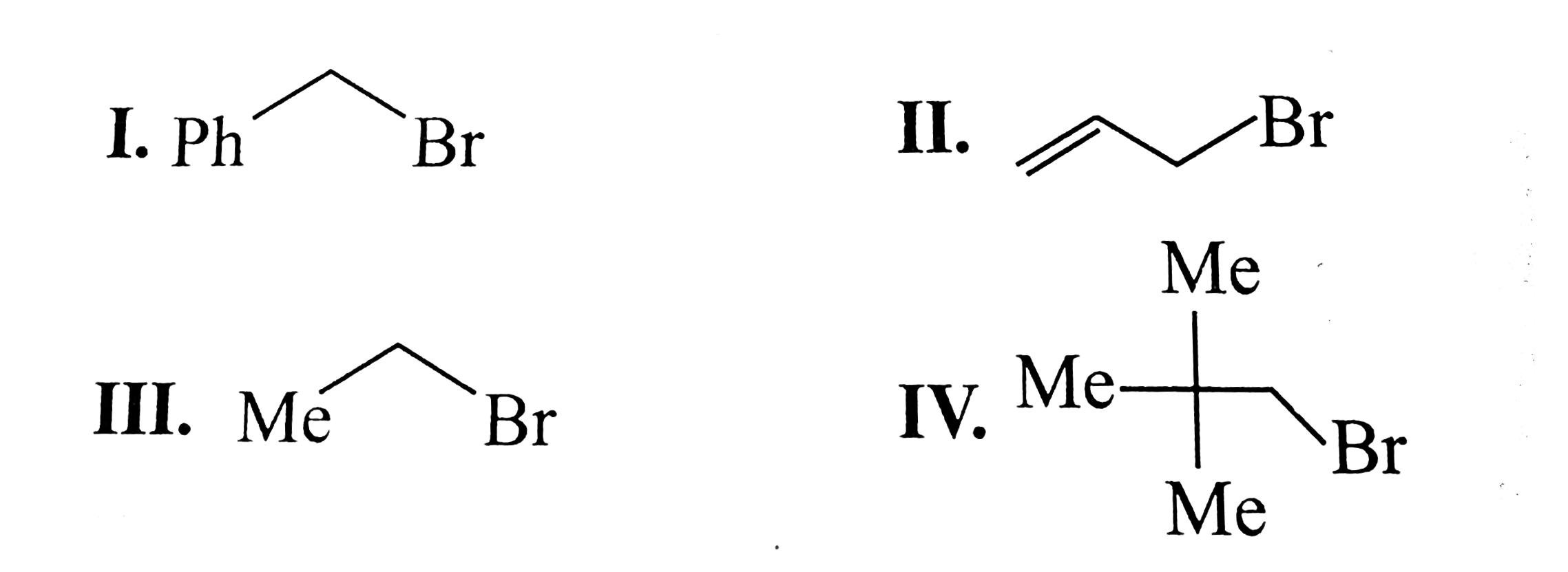
Select the correct answer.View Solution`SN` reaction is given by these compounds, which have a nuclophilic group and a good leaving `EWG`. It should be stable after leaving with bonding pair of `overline(e)'s` and it should have high polarisability.
Nucliphilic aliphatic substituion reaction is mainly of two types `SN^(-1)` and `SN^(2). SN^(-1)` mechanism is a two step process. Reaction velocity of `SN^(-1)` depends only on the concentration of the subtrate. It proceeds via the formation of carbocation, optically active substrate gives `(o+)` and `(o-)` froms of the product.
In most of the cases, the product usually consists of `5-20%` inverted and `(95-80%)` racemised species. The more stable is the carbocation, the greater is the propotion of racemission. In solvolysis reaction, the more nucleophillic is the solvent, the greater is the proportion of inversion.
For the reaction

which substrate will give maximum racemismision ?View Solution`SN^(2)` reaction is a bimolecular reaction which takes places by the formation of `T.S.` Veolcity of the reaction depends on the concentration of the substrate as well as the nucleophile.
The reaction is favoureed by strong `Nu^(o-)` and in the presence of polar aprotic sovlent, optically active halides give. Walken inversion by `SN^(2)` mechanism. The presence of hero group (atom) at `beta-C` atom, unsaturation at `beta-C` and `(-overset(O)overset(||)(C)-)` group at `alpha-C` atomn favor `SN^(2)` mechanism.
Allyl halides and benzyl halides give `SN^(1)` and `SN^(2)` reactions. Allyl halides alos give `SN^(2)` mechanism `EDG` at ortho- and para- postions in benzyl halides favors `SN^(1)` mechanism, wheras `EWG` favors `SN^(2)` mechanism.
Which of the following will give `SN^(2)` reaction?
 View Solution
View Solution`SN^(2)` reaction is a bimolecular reaction which takes places by the formation of `T.S.` Veolcity of the reaction depends on the concentration of the substrate as well as the nucleophile.
The reaction is favoureed by strong `Nu^(o-)` and in the presence of polar aprotic sovlent, optically active halides give. Walken inversion by `SN^(2)` mechanism. The presence of hero group (atom) at `beta-C` atom, unsaturation at `beta-C` and `(-overset(O)overset(||)(C)-)` group at `alpha-C` atomn favor `SN^(2)` mechanism.
Allyl halides and benzyl halides give `SN^(1)` and `SN^(2)` reactions. Allyl halides alos give `SN^(2)` mechanism `EDG` at ortho- and para- postions in benzyl halides favors `SN^(1)` mechanism, wheras `EWG` favors `SN^(2)` mechanism.
In the reaction View Solution
View Solution
Exercises Linked Compreshension Type questions and complete solutions for chapter AROMATIC COMPOUNDS AND ALKYL AND ARYL HALIDES of CENGAGE CHEMISTRY (HINGLISH) of Class 12
All Exercises from CENGAGE CHEMISTRY Class 12 CHEMISTRY AROMATIC COMPOUNDS AND ALKYL AND ARYL HALIDES
- Archives Assertion-Resoning
- Archives Fill In Theblanks
- Archives Mutiple Correct
- Archives Mutiple Correct Answers Type
- Archives Single Correct
- Archives Single Correct Answer Type
- Archives Subjective
- Archives Subjective Type
- Exercises Assertion-Resoning
- Exercises Assertion-Resoning Type
- Exercises Concept Application
- Exercises Concept Application Type
- Exercises Linked Compreshension
- Exercises Linked Compreshension Type
- Exercises Multiple Correct
- Exercises Multiple Correct Answers Type
- Exercises Single Correct
- Exercises Single Correct Answer Type
- Exercises Subjective
- Exercises Subjective Type
- Illustration
- Solved Examples
- Solved Problems
